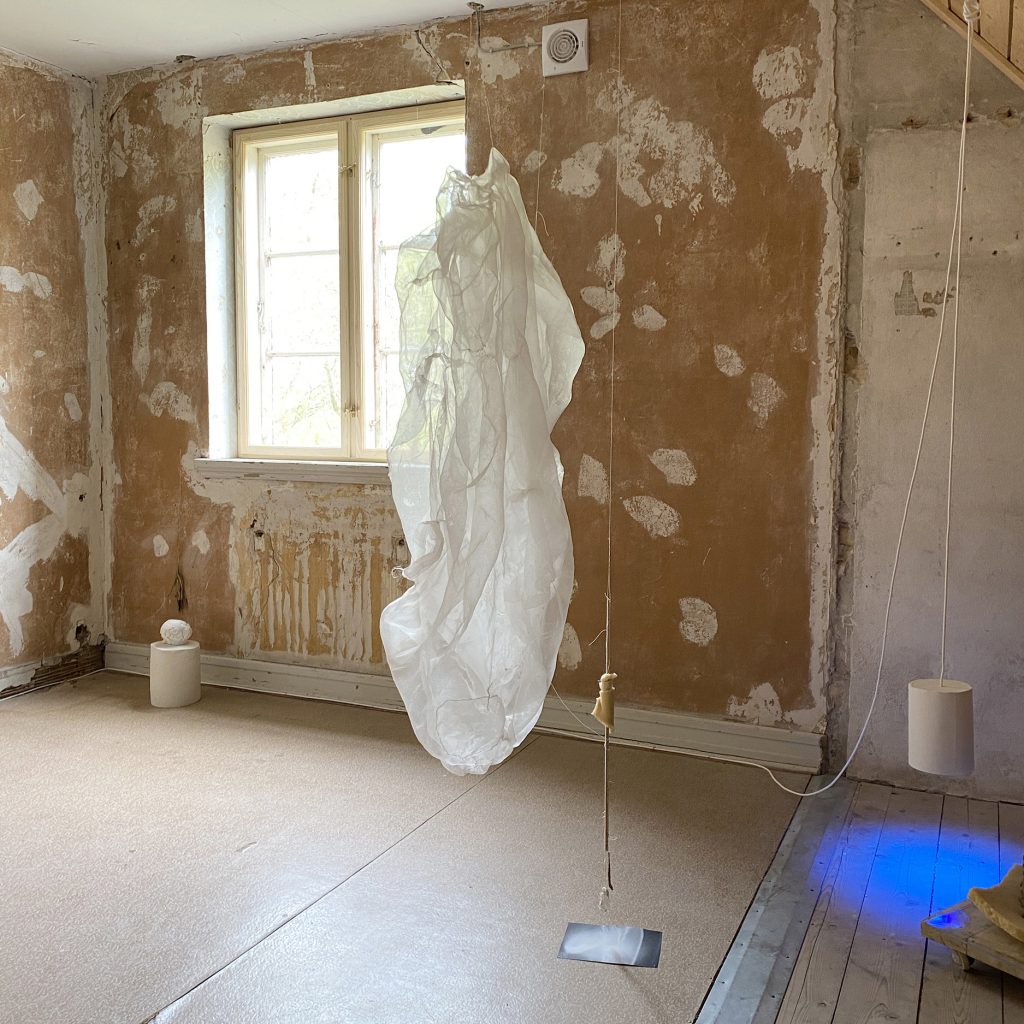People have created “installation art” since they discovered they could make marks. Denmark artist Susanne Schmidt-Nielsen’s unique installation was an impressive and complimentary display in the Richard Winthers’ house. “This something, this in between” opened on April 30th in Denmark.
How the physical reality of our environment affects the inner reality of our mind and spirit is an ongoing source of interest for all of us in different ways across cultures. Our response to what is around us is a key component of an aesthetic experience. We have always wanted to understand and appreciate our relationship to our environment. Psychologists sometimes call this perception of locus of control. The pandemic years made home and work inseparable for some in recent times, but for others, it has always been that way.
The boundaries between theater, art, music, and performance are fluid from a historical perspective, The nature of the space in Richard Winthers’ house is ambiguous. The house was the home and studio of Richard Winther (self nicknamed RDO) from 1993 to 2007. Winther’s work is vibrant and full of movement and life. His themes come from ancient mythology, with erotic and sometimes unsettling overtones.
For this show, I have picked up on the diversity and energy that I see in the work of Richard Winther and in his house by using a wider range of material than I normally do, including ready-mades. The material is exposed and recognizable, and as always, I leave the traces from the processes visible as they too are narrative elements. Susanne Schmidt-Nielsen
Today, the house is a museum of sorts; it is orderly but not polished. The raw nature of the materials and interior, juxtaposed with an open and clean space, give rise to a pleasant feeling of newness; that anything is possible anywhere if we are open to it. This is magnified in the shiny glass and ready-made surfaces of some of the sculptures by Susanne; the organic use of fabric or clay in her sculpture both complements and enhances the ongoing understructure of the walls. We feel like we have entered a space that is free from expectation, a setting where the whole is indeed different from but very much related to the sum of its parts.
Other examples are “Womanhouse”, the 1970’s Feminist environment created by Judy Chicago and Mimi Shapiro and their students in California, where they appropriated an abandoned (and eventually demolished) house making each room a thematic storybook of sorts. Kirt Switters’ Mertzblau is a case of an artist simply turning a house into an architectural sculpture with composition and design overruling function in every way. Isaiah Zagar is another artist who creates environments comprised of and not distinguished from their spaces, which are mostly permanent. The distinction between permanence and transportable art is another issue with plenty of historical references. In Medieval times wealthy patrons moved from place to place, often using portable tapestries to cover stone walls for decorative and practical purposes. The question of what is and what is not art continues to fascinate artists, art historians, and critics.
Duchamp’s shovel (In Advance of a Broken Arm) or his Large Glass (Bride Stripped Bare by her Bachelors Even) continue to make us question what distinguishes an object from a subject, or even if there is a distinction, bringing into play the Dada idea of “the absence of taste either good or bad.”While this exhibition may be a distant cousin to these pervading questions, its organic quality, the painted rooms, and objects in their spaces, both sacred and earthly, give it a different purpose. It isn’t asking us to question our taste or even ask if taste is relevant in today’s art world. It simply presents us with a living, clean place to be with ourselves and the artists, past, and present, who work there.
Carol Heft is a New York City-based artist and educator. She is a graduate of the Rhode Island School of Design and her work has been exhibited internationally. She teaches Drawing, Painting, and Art History at several colleges in New York and Pennsylvania, and is represented by the Blue Mountain Gallery in New York City.










